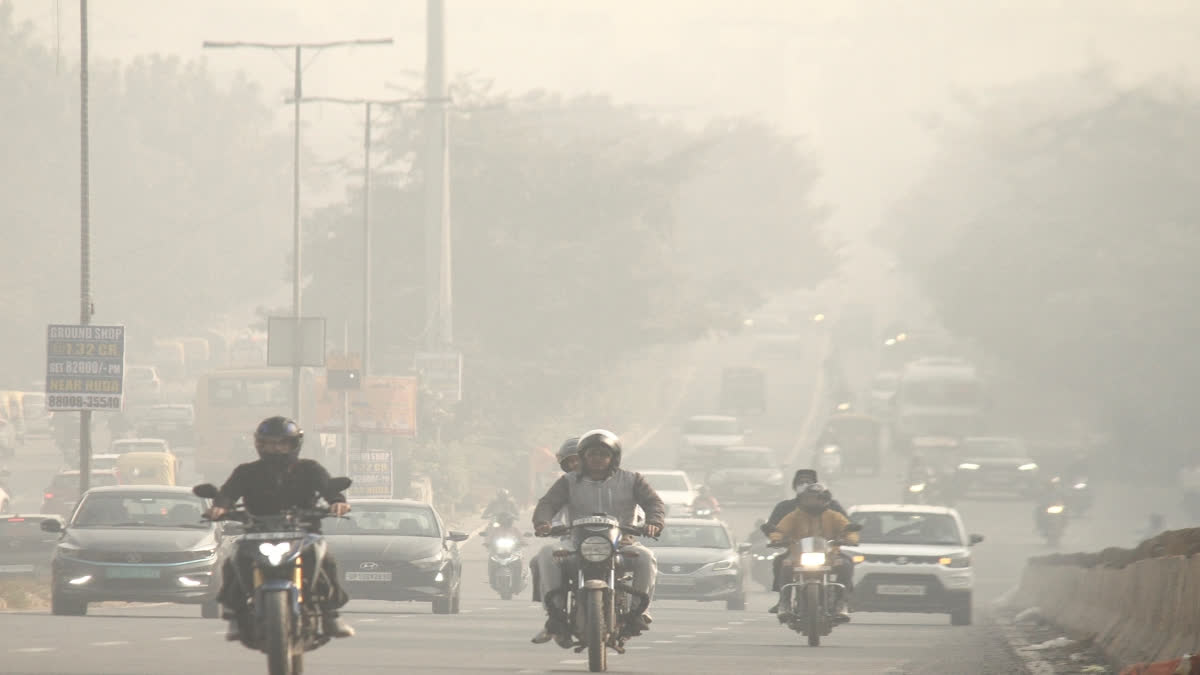Of-late India's northern capital region was in the news for an extreme poor-quality level of air leading to public outcry and calls for more stringent government action. China too has witnessed a similar type of situation in past, nonetheless has turned the table and today, it boasts in the glory of housing some of its major cities as the clean air cities with clear blue sky which were earlier having hazardous level of air quality.
India can certainly draw some valuable lessons from China in its ongoing battle against the pervasive issue of smog and air pollution, though any attempts to replicate China's methods will need to be finely tuned to the unique challenges and circumstances India faces. Both countries have long been burdened by severe air quality issues, yet China has made noticeable progress in curbing pollution in recent years.
One critical area where India could benefit from China's approach is the implementation of stringent air quality regulations and their robust enforcement. China has introduced more rigorous standards for air quality in recent years, accompanied by severe penalties for non-compliance. In some cases, local governments are held accountable for failing to meet specific pollution reduction targets.
This punitive approach has fostered a culture of accountability, compelling industries to adhere to environmental protocols and prompting cities to improve their air quality standards. India, by contrast, suffers from weak enforcement mechanisms that fail to hold polluting industries to account, and much of the environmental law enforcement is either patchy or ineffective.
Adopting a similar strategy, where regulatory frameworks are not just robust but are also strictly enforced, could greatly reduce industrial emissions in Indian cities. India needs to focus on enforcing air quality standards, penalizing those who breach regulations, and creating an atmosphere of accountability for local and national actors.
A second lesson lies in China's commitment to transitioning towards renewable energy and cleaner technologies. The Chinese government has made colossal investments in clean energy, particularly in wind and solar power, and electric vehicles (EVs) have become a significant part of their urban planning initiatives.
The result has been a significant reduction in emissions from energy generation and transportation, two of the leading sources of air pollution. China's commitment to ensuring that its cities adopt cleaner sources of energy and lower-emission vehicles can serve as a valuable model for India. India, like China, faces an energy crisis exacerbated by reliance on coal, particularly in the power sector.
However, India is also rich in renewable resources, and shifting focus towards solar and wind power could not only reduce pollution but also address energy security in a more sustainable way. Equally important is the adoption of EVs. By offering incentives for EV adoption and expanding infrastructure such as charging stations, India could reduce vehicular emissions that choke the streets of its major cities. A combination of renewable energy adoption and a green transportation revolution could drive substantial improvements in India's air quality over time.
In addition, China’s effort to modernize and clean up its industrial practices has been a pivotal element in its pollution control strategy. Over the last decade, China has taken drastic steps to close down or upgrade heavily polluting industries, especially in sectors like steel production, cement manufacturing, and coal mining.
In some cases, regions with high pollution levels have witnessed the relocation of factories to areas where environmental impact can be better managed. China has also taken the bold step of temporarily shutting down high-emission industries during periods of extreme pollution, which helps mitigate short-term air quality crises. This approach is something India could replicate with localized interventions.
India's industrial growth has come at the expense of its environmental health, and sectors such as construction, steel, and textiles must be encouraged to adopt cleaner practices. Furthermore, incentivizing industries to adopt green technologies could be crucial, as can holding them accountable for emissions through stricter monitoring and penalties.
Another area where India can learn from China is the role of real-time monitoring and transparency in fighting air pollution. China has invested heavily in expanding its air quality monitoring infrastructure and made real-time pollution data publicly available. This transparency has been instrumental in raising awareness about pollution levels and driving public and governmental action.
Air quality information in real-time has not only empowered citizens to make informed decisions but also created an atmosphere where local governments are compelled to act swiftly and decisively in curbing pollution. India, while making strides in this area, still faces significant gaps in its monitoring systems. Expanding air quality monitoring stations across urban and rural areas, with a focus on remote regions where pollution may be severe but less visible, would be crucial. Furthermore, India should ensure that real-time air quality data is available to the public and integrated into policymaking, thereby enhancing transparency, and fostering a culture of responsibility and responsiveness.
The Chinese approach to public health has also been an integral component of its air pollution strategy. Recognizing the negative health impacts of smog and air pollution, China has framed its environmental policies within the context of protecting public health. Government-led interventions are designed with a focus on reducing the negative health outcomes associated with pollution, which has garnered public support for stringent regulations.
Similarly, India must begin to frame its air pollution crisis as not only an environmental issue but also a public health emergency. Pollutants like particulate matter (PM2.5) have been linked to a range of respiratory and cardiovascular diseases, which contribute significantly to the country’s already strained healthcare system. Public health-focused air quality policies that emphasize reducing these health impacts could provide the moral and political leverage needed to enact lasting changes.
Furthermore, China’s top-down, government-driven approach to air pollution control has proven successful in aligning national, regional, and local objectives. The central government has set ambitious pollution reduction goals and ensured that local governments are held accountable for achieving these targets.
India, in contrast, suffers from a decentralized approach, where state and local governments have varying levels of commitment and capacity to address pollution. At times, the politics among governments of the different political ideologies exacerbate the situation from bad to worse. However, India could greatly benefit from clearer national air quality targets, accompanied by concrete strategies for implementation at the state and city levels. This would create consistency in efforts across the country, ensuring that air pollution control is not left to the discretion of individual regions.
However, while these lessons from China are valuable, India must confront certain challenges unique to its context. India’s diverse geography, high population density, and dependence on coal for energy present significant hurdles in reducing pollution. Moreover, economic and social considerations must also be factored in. Many of India’s industries, particularly in rural areas, still rely on traditional and polluting practices due to cost constraints. Therefore, any policy changes must be balanced with efforts to ensure that the country’s economic growth continues while also safeguarding public health and the environment.
India can undoubtedly glean important lessons from China’s battle against air pollution. However, to be effective, these lessons must be adapted to India’s distinct socio-economic, cultural, and environmental realities. A multi-pronged calibrated approach involving stringent regulations, promotion of green technologies, industrial transformation, real-time monitoring, spreading awareness and public health advocacy will be crucial in India’s quest to tackle air pollution.
(Disclaimer: The opinions expressed in this article are those of the writer. The facts and opinions expressed here do not reflect the views of ETV Bharat)



